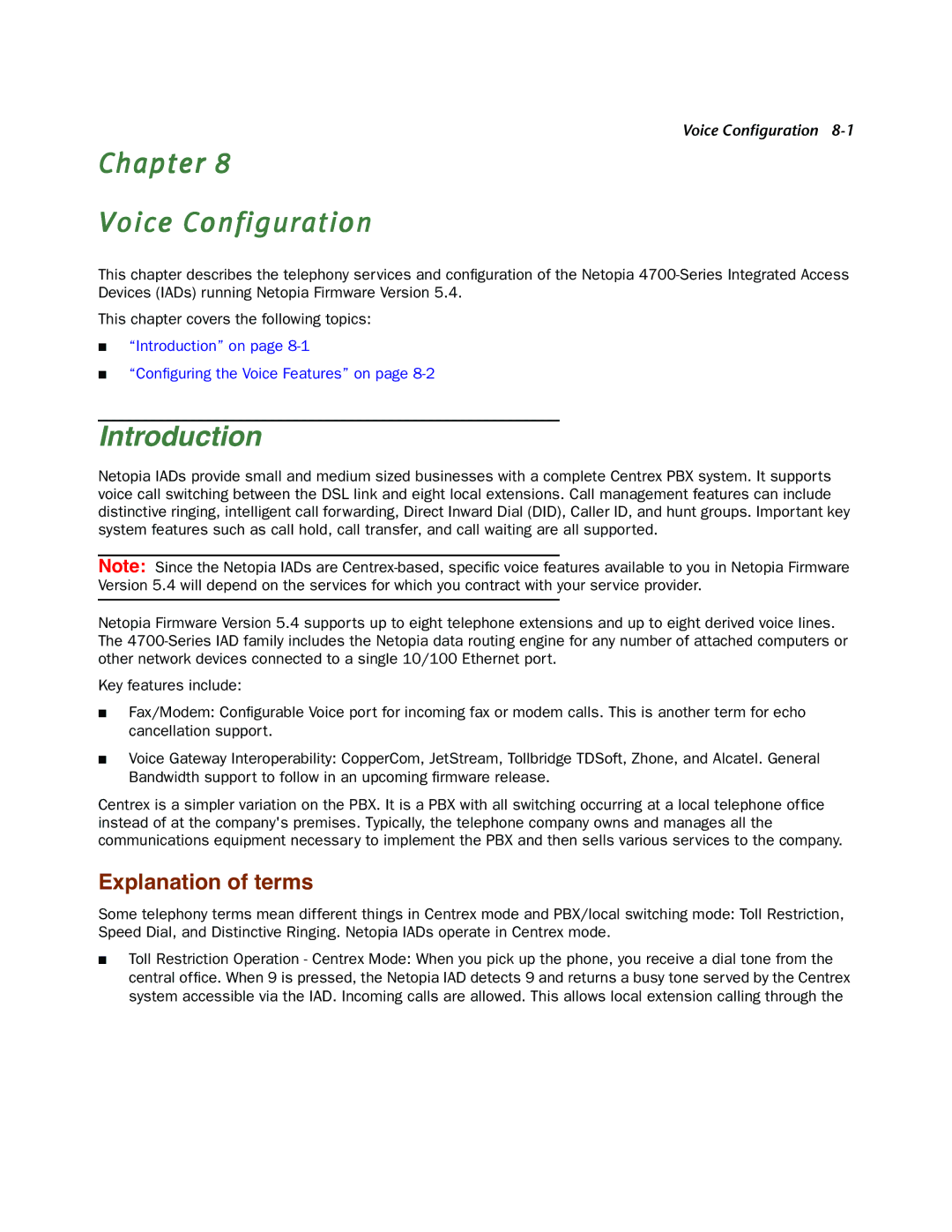
Voice Configuration
Chapter 8
Voice Configuration
This chapter describes the telephony services and configuration of the Netopia
This chapter covers the following topics:
■“Introduction” on page
■“Configuring the Voice Features” on page
Introduction
Netopia IADs provide small and medium sized businesses with a complete Centrex PBX system. It supports voice call switching between the DSL link and eight local extensions. Call management features can include distinctive ringing, intelligent call forwarding, Direct Inward Dial (DID), Caller ID, and hunt groups. Important key system features such as call hold, call transfer, and call waiting are all supported.
Note: Since the Netopia IADs are
Netopia Firmware Version 5.4 supports up to eight telephone extensions and up to eight derived voice lines. The
Key features include:
■Fax/Modem: Configurable Voice port for incoming fax or modem calls. This is another term for echo cancellation support.
■Voice Gateway Interoperability: CopperCom, JetStream, Tollbridge TDSoft, Zhone, and Alcatel. General Bandwidth support to follow in an upcoming firmware release.
Centrex is a simpler variation on the PBX. It is a PBX with all switching occurring at a local telephone office instead of at the company's premises. Typically, the telephone company owns and manages all the communications equipment necessary to implement the PBX and then sells various services to the company.
Explanation of terms
Some telephony terms mean different things in Centrex mode and PBX/local switching mode: Toll Restriction, Speed Dial, and Distinctive Ringing. Netopia IADs operate in Centrex mode.
■Toll Restriction Operation - Centrex Mode: When you pick up the phone, you receive a dial tone from the central office. When 9 is pressed, the Netopia IAD detects 9 and returns a busy tone served by the Centrex system accessible via the IAD. Incoming calls are allowed. This allows local extension calling through the
